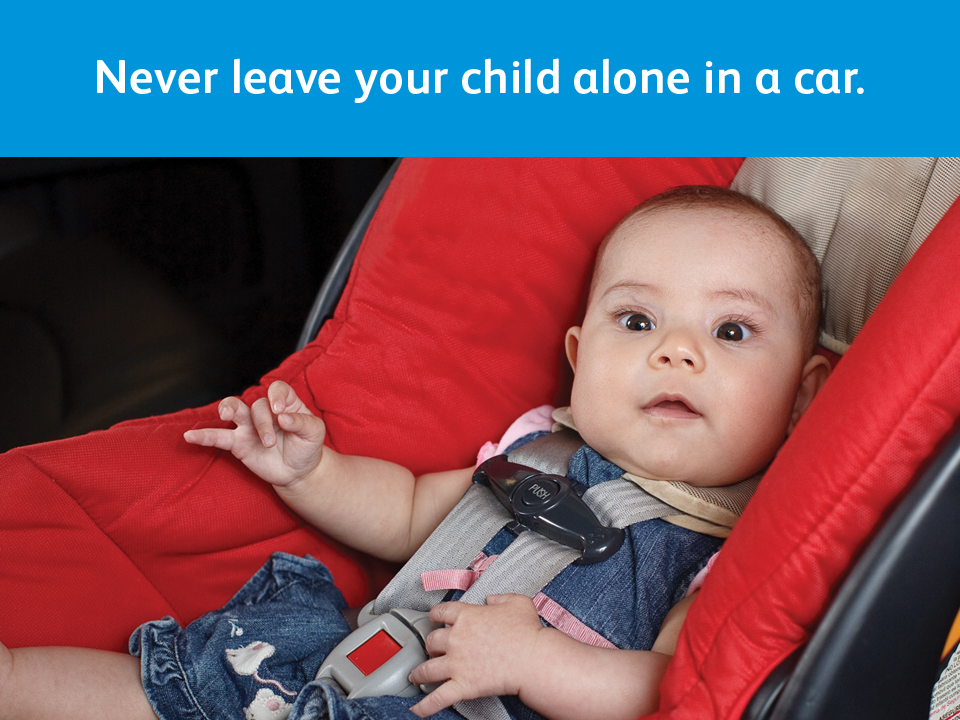
This picture from Safe Kids reminds folks to never leave a child alone in a car.
The dog days of summer are officially here as the July sun sets into August. That means it’s more important than ever to take extra precaution to help save children from heatstroke. Today, Chrysler Group joins the National Highway Traffic Safety Administration (NHTSA) in a discussion focused on raising awareness about the dangers of kids in cars, as well as preventing heatstroke.
At least 19 children have already died this year from vehicular heatstroke, which means one child dies from being left in a hot vehicle nearly every 10 days. It is the leading cause of non-crash vehicle deaths for children 14 and under.
Sadly, 52% of kids who died from vehicular heatstroke were “forgotten” by their caregiver. This is a 100% preventable tragedy, which is why it’s so important to look before you lock!
Another thing to keep in mind is how much easier it is for a child to overheat than it is for the average adult. On a hot day, a child’s temperature heats up five times faster than an adult’s does. It’s also important to remember that children are at higher risk of dying from heatstroke because many are too young to communicate. In more than 29% of cases of fatal heatstroke, a child got into the vehicle on their own, so be sure to keep a close eye on children, even if there isn’t a car ride planned.
Even if you aren’t a child’s caregiver, it is still critical to take action if you see a child alone in a hot vehicle. Safe Kids recommends that you call 911 or your local emergency number immediately if you see this. If the child is in distress due to heat, get him or her out of the vehicle as quickly as possible, by any means necessary, and cool the child rapidly by spraying him or her with cool water or a garden hose. The same is true for pets left in hot cars – not only do they have a higher body temperature to start with, but they’re also wearing a fur coat.
Join us to help fight heatstroke deaths by discussing the issue on social media. While you are on Facebook or Twitter today, use the hashtags #heatstroke, #heatstrokekills and #checkforbaby. Sharing this information with your family and friends will help get the word out about vehicular heatstroke.




